I get quite a few emails from people asking me what camera they should buy. Quite often these questions get asked within the sphere of one or another type of camera, and probably the most frequent camera type I get asked about are what I call “Advance Compact Cameras”. To help answer this question I have decided to put together a guide to my thoughts on these cameras.
I am yet to buy and review all of the cameras that fit into this category, though I have passed judgement on a few of the most popular over the last few years. The idea of this guide is simply to summarise the posts I have so far written in a bid to guide people through them in their search for their ideal “advanced compact”.
What is an “advanced compact”
At some point in the 90’s/early 2000’s there was a bit of a race between various camera manufactures to build the perfect compact camera. These cameras are identified by a series of shared attributes that separate them from the more basic “point & shoot” film cameras that were commonplace at the time. Firstly, they were all a lot more money than the common point & shoot cameras, with some like the Minolta TC-1 costing well over £1000. It’s fair that in return for that extra cash, they did provide some advanced features that give them more appeal to photographers looking for something a little more sophisticated.
The main features that are common to all of these cameras are high quality lenses, good build quality, good autofocus & autoexposure, the ability to switch to aperture priority and the ability to set the flash to off and it stay off even when the camera is powered down. There are other shared attributes, but these tend to be the justifications behind most peoples desires to buy them.
The reasons people choose one over another come down to some of the more subtle differences between the cameras. Below you will find my current summarised thoughts about the cameras I have so far written about, with links to the reviews and other relevant posts within 35mmc. I really hope that this helps people find their ideal advance compact, but in case it doesn’t I would invite comment and questions below that might add to the content of this page.
The Fuji Klasse W
The Fuji Klasse W was the first “advanced compact” I bought. I got it new from Bellamy of JCH in the hope that it would answer all my desires for a point and shoot with a bit of poke. I posted my initial impressions here, and whilst I remember feeling a little concerned about it’s speed of operation, I let buried those worries in the hope that I would grow to love the camera.
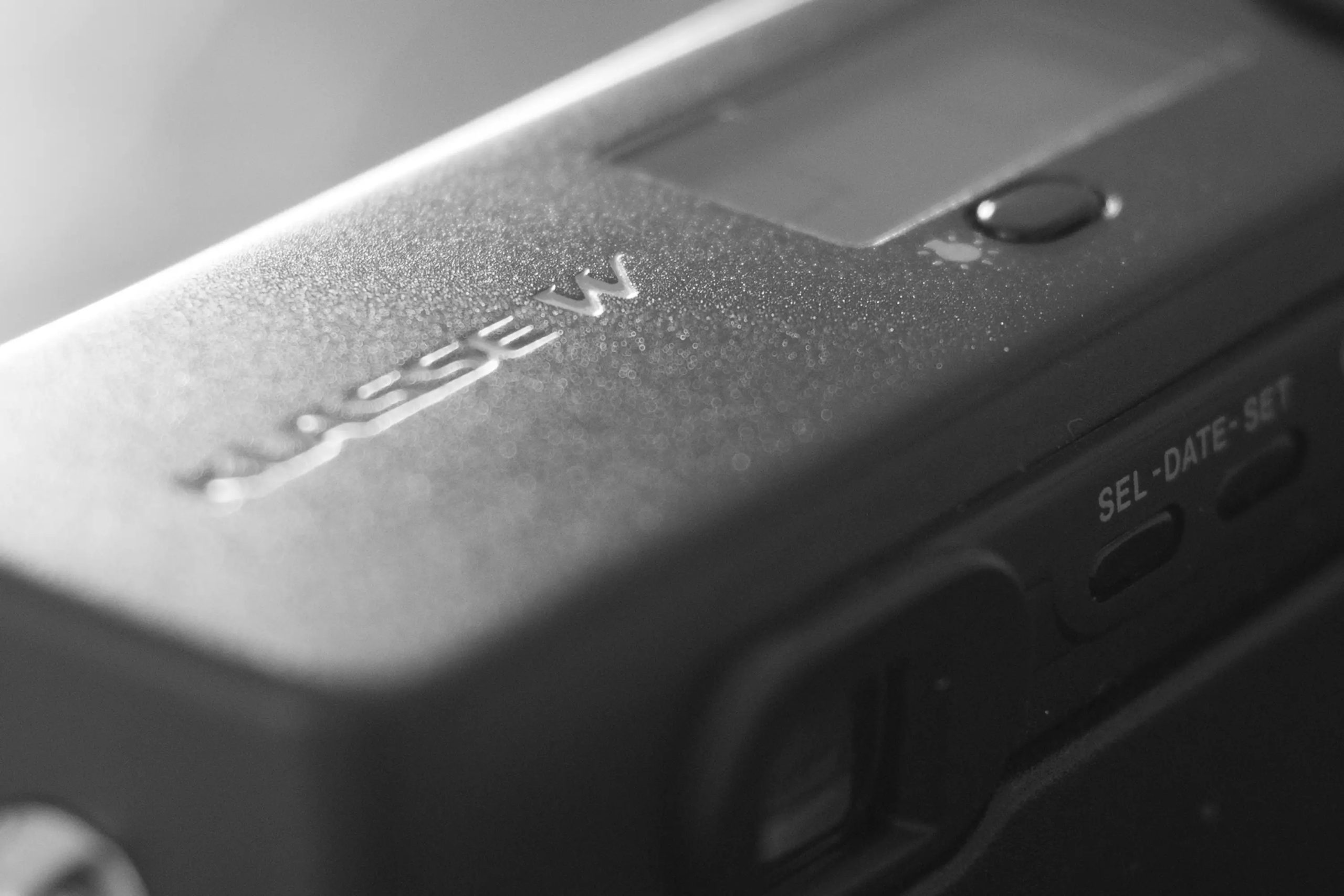
Some time later I went on to post some thoughts on exposure and metering.
I must admit, after I later bought the Ricoh GR1, I ended up putting the Fuji Klasse W down, and not really picking it up again. Whilst I think the lens is stunning, it’s functional speed just got in the way for me.
As I conclude in my final thoughts though, this should not rule this camera out for everyone as it has some quite unique features within this class of cameras.
Ultimately if I was to recommend this camera to anyone it would be to those looking for a 28mm lensed camera for landscape photography where it’s speed won’t be an issue.
Standout Features of the Fuji Klasse W
– Stunning 28mm f/2.8 lens
– Threaded shutter release on the side
– Ability to manually set slow shutter speeds up to 60 seconds
– Automatic exposure bracketing
Primary frustrations of the Fuji Klasse W
– Shutter lag
– Clunky menu
– Poor viewfinder
– Light meter only functions down to 4ev
My final thoughts review of the Fuji Klasse W can be found here
The Ricoh GR1 series of cameras
My first experience of the Ricoh GR1 series of cameras we the original. I bought the silver plain GR1 as it was the least expensive of the series that i could get my hands on. I remember quite vividly feeling like I really had found my calling in the cameras when I wrote this first short review. Though at the time I was still fooling myself into thinking the Fuji Klasse W was the right camera for me.
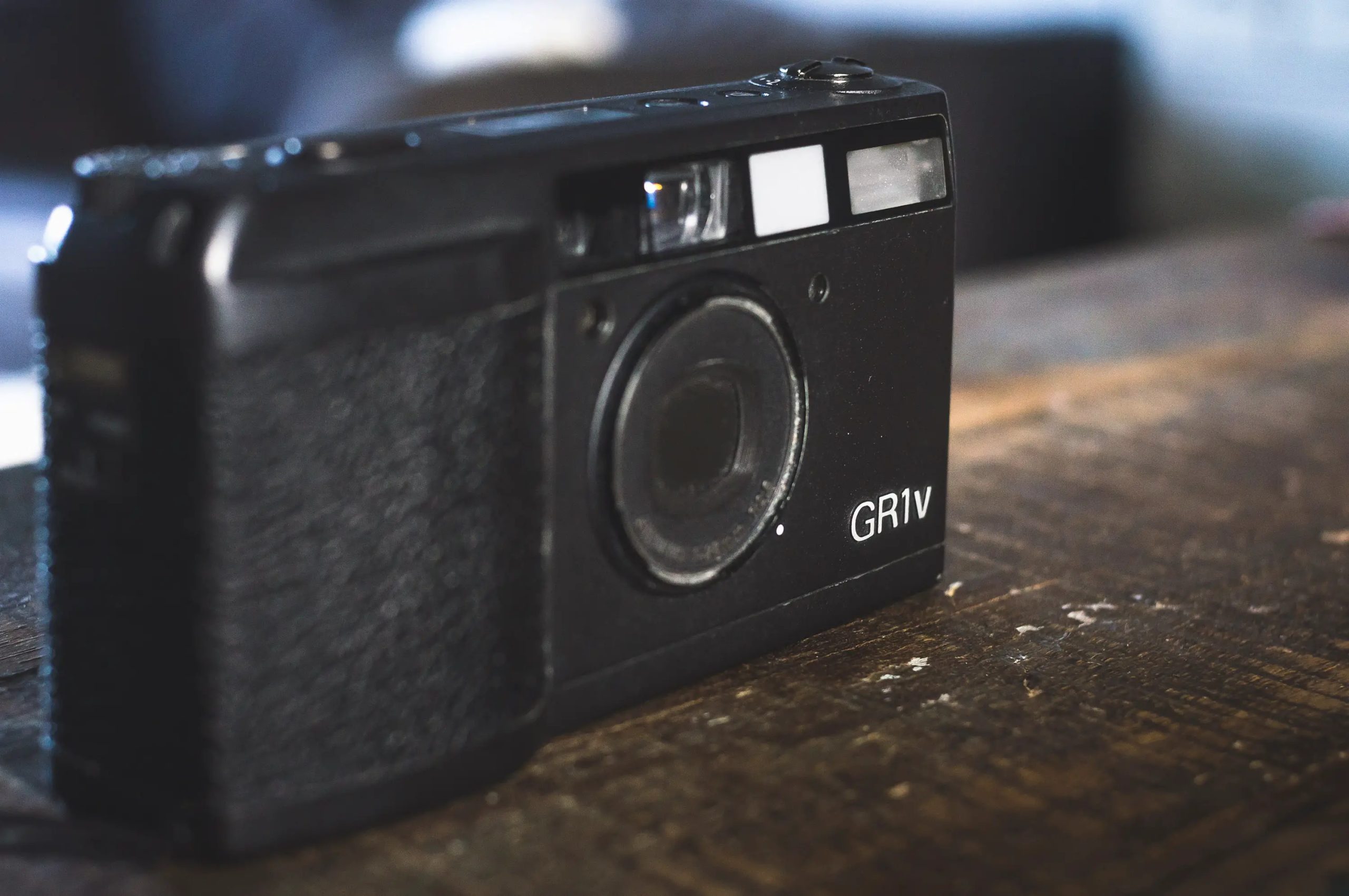
Over time though, my preference became clear, the Klasse got shelved and the Ricoh became “the one”.
Once this decision had been made that the Ricoh was the camera for me, I decided to pursue the idea of a GR1v – this did not end well. As is describe in this post, my path to a fully functioning GR1v was to be fraught with disappointment.
Unfortunately even my repaired GR1v is now dying. The LCD readouts on these cameras are no longer stable. As such, if you are thinking about buying one, just be aware, it won’t last forever. Depending on how bad the LCD gets, they can become very difficult to use to their capacity as a camera.
A shame, as these cameras really are quite superb. The lens is nothing short of stunning, they are very fast in day-to-day operation especially in “snap” mode and even in the normal shooting mode is certainly faster than the Klasse. I would also argue that they have the best handling of any compact camera.
If I were to recommend this camera for any particular type of shooting, it would probably be street photography – or at least any type of photography where a quick response from the camera is required.
Standout Features of the Ricoh GR1
– Stunning 28mm f/2.8 lens
– Fast to use, especially in snap mode
– Simple, elegant operation
– Small, great handling and light weight
– Manual ISO overrides (only on GR1v)
Primary frustrations with the Ricoh GR1
– They are all dying the LCD death
– Must be used in aperture priority in lower light else it chooses slower speeds than you might expect
My final thoughts Ricoh GR1v review can be found here
The Contax T2
At some stage whilst shooting with the Ricoh I think I came to the conclusion that the 28mm was too wide for all occasions. I had long lusted after a Contax T3, but just couldn’t find the cash. As such I thought I would try the Contax T2.
The biggest concern I had about the T2 was the size. I’d read numerous reports online saying it was a bit of a beast but didn’t take heed of them.
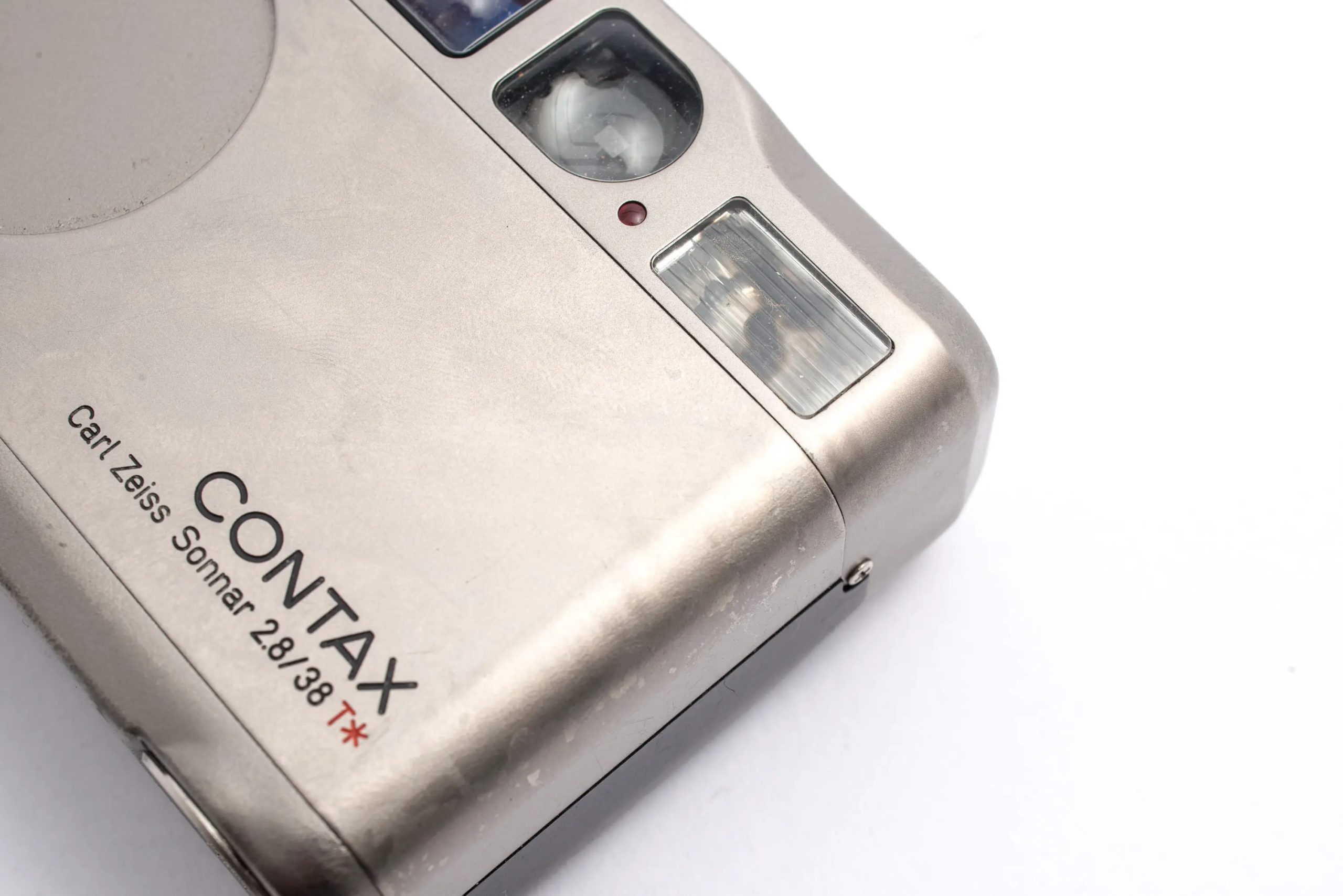
My early experience of the camera proved the reports I had read wrong. Its size and weight just felt right.
My first Contax T2 was a little bit tatty. It had suffered the flash burn that sometimes seems to affect them, and also had somehow tarnished. To be honest, I’m not sure if the flash burn causes an issue, but its worth keeping an eye out for – look for smokey flash glass. I haven’t seen another tarnished one, so I’m not sure this is an issue really.
In use, short of the lens sometimes interfering with my finger I found it to be a very pleasurable camera to use. The viewfinder is one of the brightest of any compact camera I have used, and the “live” metering makes for a very nice way of assessing and locking the exposure you want. It is also very fast, and has probably the best most easy to use manual focus mode of any advanced compact I have used.
Despite my initial impressions, long term I just found the size and weight too great, and unfortunately I stopped using the Contax T2 not long after I bought a second one.
If I were to recommend the Contax T2, it would likely be to anyone looking for a sharp shooting carry everywhere who has big enough pockets for a larger camera (though not deep enough for the Contax T3).
Standout Features of the Contax T2
– Exceptional 38mm f/2.8 lens
– Brilliant viewfinder
– Very nice “live” metering
– Genuinely useable manual focus
– Program mode that favours wider apertures over longer shutter speeds
Primary frustrations with the Contax T2
– Big and heavy
– No manual ISO
– f/2.8 only available in program mode
You can find my Contax T2 review here
The Minolta Tc-1
Frustrated with both the Klasse W and Ricoh GR1v I decided to get myself a Minolta TC-1. Having gone down the road of broken cameras with the Ricoh, I decided to buy through Bellamy again.
He found me what looked like a mint condition TC-1 for a surprisingly acceptable price and sent it over to me. Unfortunately one roll in it was clear there was something wrong with it as I was getting strange light leaks. Back to Japan it went.
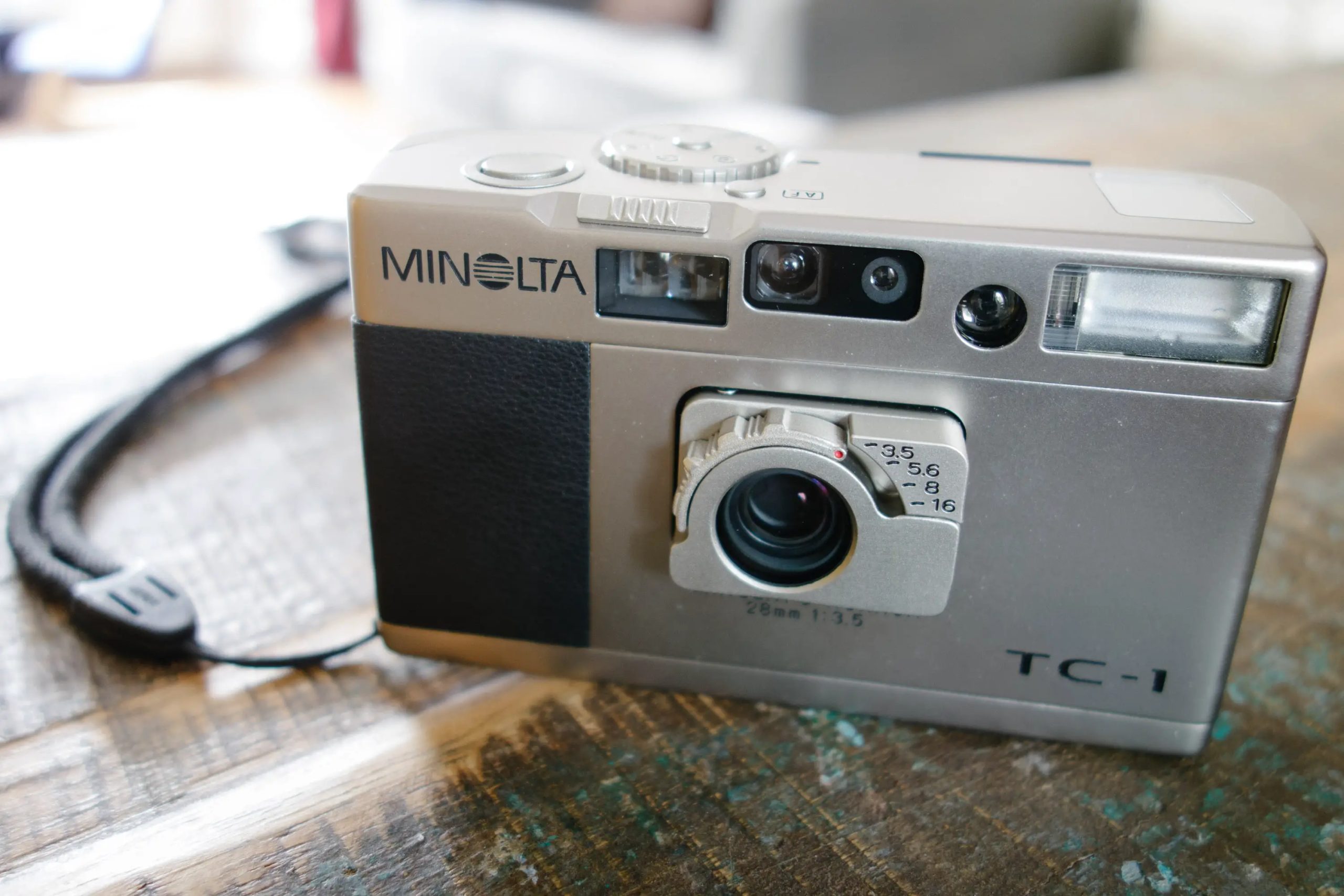
After landing back in the UK after its full service at Minolta (you read that right, Minolta were still repairing them at the time), The real fun started.
It is fair to say, of all the advanced compact cameras I have tried this is definitely the most fun to use. With its manual aperture thats controlled by a little switch on the lens, it is by no means the most practical or indeed fast camera to use, but it provides a unique user experience that has to be tried to be appreciated – enigmatic was the best word I could come up with when I wrote my post about it.
Outside of its slightly unusual nature it is actually a superb camera though. It’s lens is something else, it vignettes at all apertures, but I am not sure I have a sharper lens in all the kit I own. It also has a spot meter, that despite taking a little to get used to, is really fantastic to use once you get the hang of it.
If I were to recommend this camera it would be to those with a little bit of patience who are looking for a camera with a stunning but characterful 28mm lens and like to feel like they are in control exposure.
Standout Features of the Minolta Tc-1
– Remarkable, though quite characterful 28mm 3.5mm lens
– Spot meter
– Tiny, yet exudes quality
– Very customisable
Primary frustrations with the Minolta Tc-1
– Quite noisy
– Finicky autofocus
– No program auto
– Confusing flash modes
You can find my Minolta TC-1 review here
The Contax T3
The Contax T3 seemed like a logical conclusion after the size and weight of the T2 meant I stopped picking it up. Once again Bellamy was consulted and once some silver crossed his palm a silver Contax T3 landed in mine. And in my palm it fit, as thankfully it is a lot smaller than its older sibling.
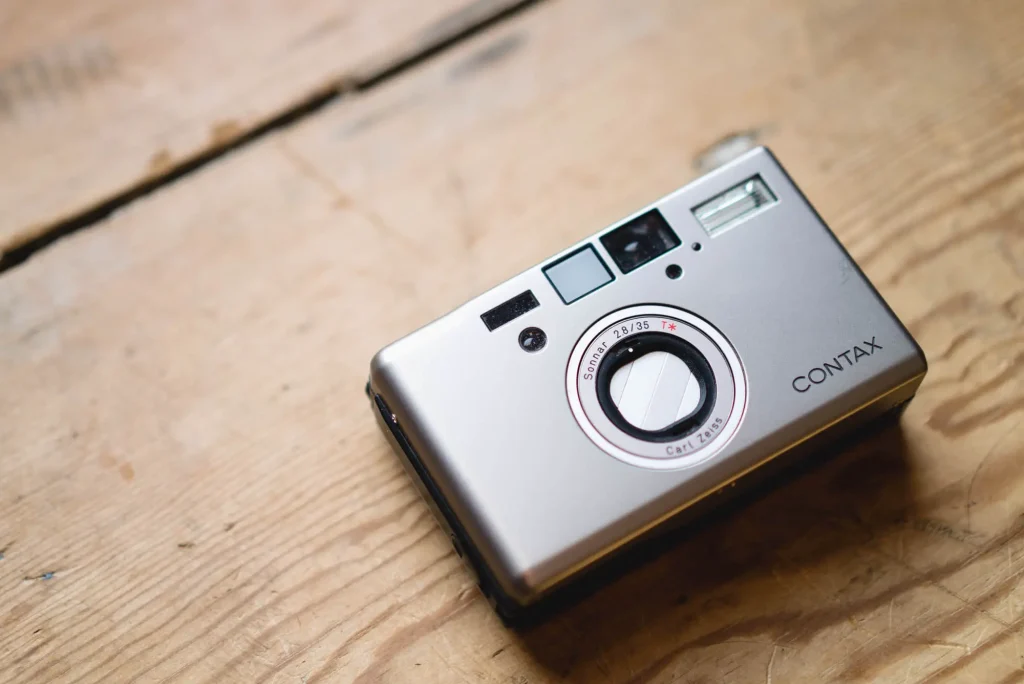
The best for last, the Contax T3 is actually the advanced compact I would recommend above all the others.
To me, the Contax T3 is the most rounded of any of the advanced compacts I have used. It is nice and fast to use, is highly customisable, but doesn’t feel complicated to use in the way the Minolta does. In fact, as I mention in my review, this camera is almost uninteresting.
But this shouldn’t be seen as a criticism, like all good products, it just works. It rarely feels like it is getting in the way or restricting you and since it’s tiny so fits and in most pockets without any real concern, it just feels like the ideal carry everywhere companion when you don’t want to take anything bigger.
It has in fact become my crutch. I don’t like going out of the house without a camera, but sometimes I don’t like going out with one hanging off me. For those times, there really is no other choice for me.
Standout Features of the Contax T3
– Superb 35mm 2.8 lens
– Very customisable, yet feels uncomplicated
– Easy to separate focus from exposure
– Easy to pocket, small yet solid
Primary frustrations with the Contax T3
– Stupidly expensive
You can find my Contax T3 Review here
Guest Posts
Since I am yet to write about every single one of these advanced compact cameras, your search might not be entirely answered by what I have so far written. Fortunately some readers of 35mmc have also submitted reports about some of their experiences. You can find all the posts about these sorts of cameras here
If you would like to write a guest post, then please get in touch. Or if you don’t have that much to say, feel free to just comment below.
Share this post:
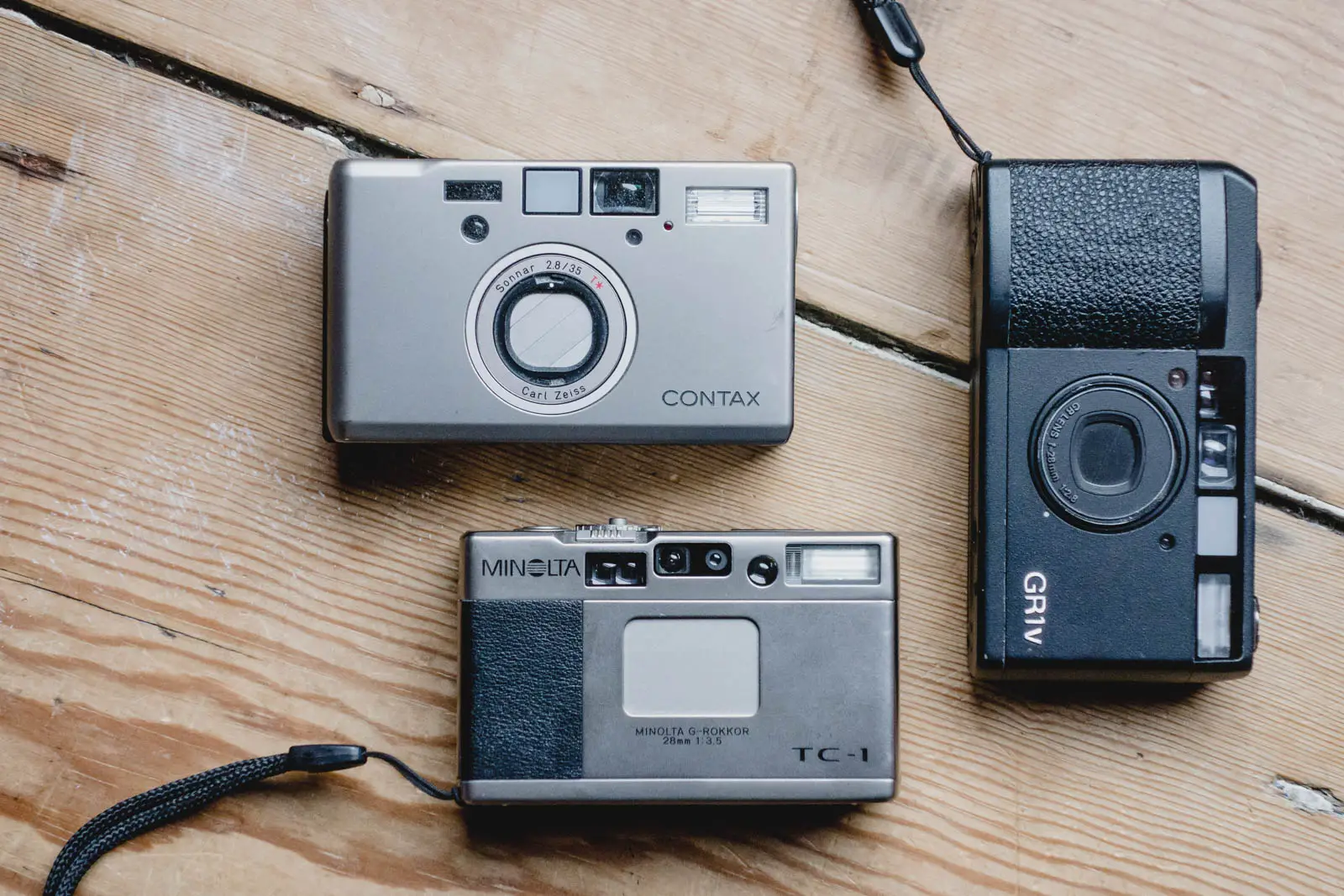








Comments
joby on The 35mmc (growing) Guide to the 35mm Advanced Compact Camera
Comment posted: 09/10/2015
Comment posted: 09/10/2015
joby on The 35mmc (growing) Guide to the 35mm Advanced Compact Camera
Comment posted: 09/10/2015
Comment posted: 09/10/2015
Comment posted: 09/10/2015
Comment posted: 09/10/2015
Dina on The 35mmc (growing) Guide to the 35mm Advanced Compact Camera
Comment posted: 11/10/2015
Blinx on The 35mmc (growing) Guide to the 35mm Advanced Compact Camera
Comment posted: 11/10/2015
Personally, I'm happier further down the league with the Olympus MjuII, Pentax PC35, Nikon L35 and similar point and shoots which offer most of the benefits of their advanced cousins, at semi disposable prices. They're not a Contax T3, but you couldn't buy a T3 strap for the price of one!
Comment posted: 11/10/2015
Comment posted: 11/10/2015
Comment posted: 11/10/2015
jojonas on The 35mmc (growing) Guide to the 35mm Advanced Compact Camera
Comment posted: 12/10/2015
raytoei on The 35mmc (growing) Guide to the 35mm Advanced Compact Camera
Comment posted: 12/10/2015
Leica minilux. Everytime I think this camera is too big or too restrictive, the images it produce always draw me back. Something about the 40mmf2.4 lens makes it magical.
Contax TVSIII. Cheap compared to the T2/T3 but with a sharp zoom. And very small too.
Contax T. Not really a P and S but more of a really small RF. Comparable to the Olympus XA. Hard to get a good copy without light leaks.
Comment posted: 12/10/2015
Rollbahn on The 35mmc (growing) Guide to the 35mm Advanced Compact Camera
Comment posted: 13/10/2015
I think the GR1v is the best designed camera by a mile in terms of size, shape and usability but 28mm is not my favourite length. I have the Contax T3 which is great and the images superb but I find a little clunky turning flash on and off, overriding ISO with Exp Comp or fuding the film canister etc.
I also have the Mju II and actually love that camera as a take-anywhere P&S but it struggles in low light and I get a lot of OOF shots which is frustrating. When it works, it is superb and very sharp. I got it as new old stock for about $100 so it was a bargain.
I tried a Contax T recently but unfortunately that turned up with the add-on flash not working so I had to send it back. While my daily camera is Zeiss Ikon RF, I found the Contax T a little fiddly to use in practice, which was a shame as I thought an RF compact would be ideal as I tend not to like AF.
So I'm selling my Ricoh GR1v and Contax T3 and will stick with my Zeiss Ikon I think. I recently bought a Nikon SB-30 which means I now have a super light weight flash (you barely notice it's there) and can take it just about anywhere. It is fun to have superb optics in a tiny camera to carry around but at $800-$1000 each I just can't justify keeping them.
Comment posted: 13/10/2015
Audun Iversen on The 35mmc (growing) Guide to the 35mm Advanced Compact Camera
Comment posted: 02/06/2018
Comment posted: 02/06/2018